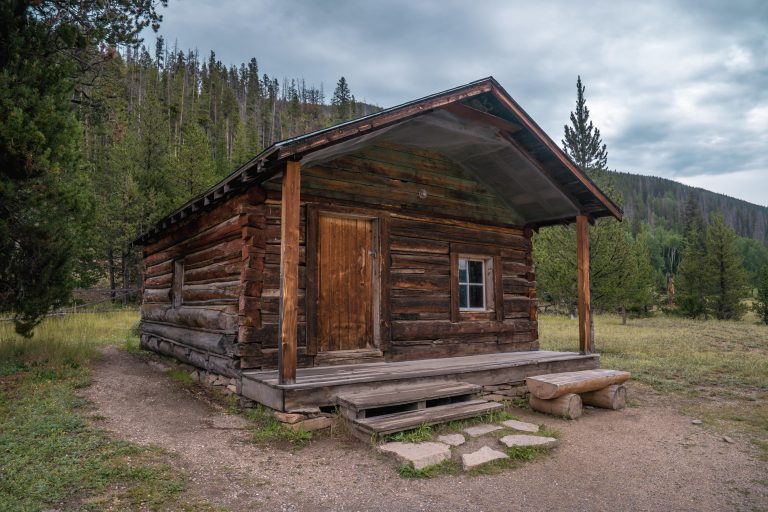Must-Read Tips for Stunning Great Sand Dunes National Park Photography
Great Sand Dunes National Park and Preserve is a unique destination for photography enthusiasts seeking to capture the stunning beauty of nature. Located in southern Colorado, this park boasts the tallest sand dunes in North America, with peaks reaching up to 750 feet. The contrast between the towering dunes and rugged mountain range backdrop provides an awe-inspiring landscape that offers endless opportunities for creative expression through Great Sand Dunes National Park photography.
Whether you’re an amateur or professional photographer, Great Sand Dunes National Park presents a remarkable canvas to capture breathtaking moments that will leave you wanting more. This article aims to provide tips and tricks on how to take stunning photographs at this national park, highlighting some of its most photogenic spots and providing guidance on camera settings, composition techniques, and more.

Best Great Sand Dunes National Park Photography Spots
There are endless locations perfect for capturing compelling Great Sand Dunes National Park photos. Our favorite photo opportunity in the park is out on the dune field, where you can capture the unique shapes and textures of the ever-shifting sand dunes. But there are so many more too! Here are the best photo ops and Instagram photo spots in Great Sand Dunes National Park:
High Dune
High Dune is the tallest dune in the park and offers incredible panoramic views of the surrounding area. It’s a challenging climb, but the views are worth it.

Star Dune
Further beyond High Dune on the dune field is Star Dune, the largest dune in the park. The dune has a unique star shape. It’s a great spot for both sunrise and sunset photography.

Anywhere on the Dune Field
Even if you don’t choose to hike to High Dune or Star Dune, you can still capture amazing photos on the lower ridges of the sand dunes by walking out just a little way onto the dune field.

Medano Creek
This seasonal creek runs at the base of the dunes and provides a beautiful contrast to the sandy landscape. The creek is best photographed in the spring and early summer when it’s flowing.

Zapata Falls
This waterfall is located just outside the park and is a popular spot for photography. The falls freeze in the winter, creating a unique ice formation.

Mosca Pass Trail
This trail offers stunning views of the dunes and surrounding mountains. It’s a great spot for landscape photography and wildlife sightings.

Montville Nature Trail
This short trail leads to a viewpoint overlooking the dunes and is a great spot for sunrise or sunset photography. We especially loved hiking here at sunset!

Great Sand Dunes National Park Photography Tips
In this section, we’re going to share tips for capturing stunning photos at Great Sand Dunes National Park, including our recommended camera settings, the best times of day to shoot, recommended equipment, and composition ideas! We also address common challenges to photographing the dunes and the best ways to address them to ensure you get the perfect shots even in tough conditions.
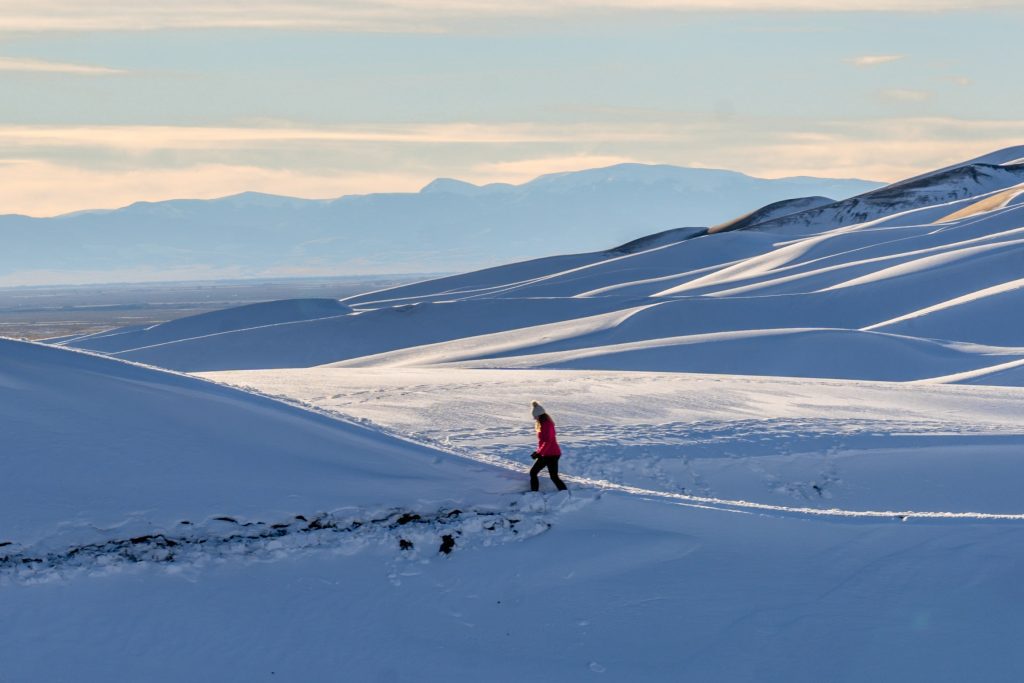
Camera Settings
When photographing sand dunes, it’s important to consider the bright, high-contrast environment and the constantly changing light conditions. Here are some camera settings that can help you capture great photos of sand dunes:
- Aperture: Use a smaller aperture (larger f-number) to increase your depth of field and ensure that the entire landscape is in focus. A range of f/8 to f/16 is usually a good choice.
- Shutter speed: Use a fast shutter speed to freeze the movement of the sand and any other elements in the scene. A shutter speed of at least 1/500th of a second is usually sufficient.
- ISO: Set your ISO to the lowest possible value to reduce image noise and maintain image quality. An ISO of 100 to 200 is typically appropriate in bright, sunny conditions.
- Focus: Use manual focus to ensure that your subject is in sharp focus. Focus on a specific point in the dunes, such as a ridge or pattern, to add depth and dimension to your photos.
- Composition: Consider using a wide-angle lens to capture the expanse of the dunes and the surrounding landscape. Look for interesting patterns, lines, and shapes in the sand to create dynamic compositions. Alternatively, try a telephoto lens to hone in on unique abstract shapes in the sand dunes.
Remember, these settings are just a starting point, and you may need to make adjustments depending on the specific lighting conditions and the effect you’re trying to achieve. Be sure to experiment with different settings and compositions to find the best approach for your photos.

The Best Times of Day for Great Sand Dunes National Park Photography
Great Sand Dunes National Park is a photographer’s dream, with its towering sand dunes, stunning mountain views, and abundant wildlife. But with so many different landscapes to choose from, it can be tough to know when to go for the best shots. Here are a few tips for choosing the best times of day to take photos in Great Sand Dunes National Park:
- Sunrise and sunset: The light is softer and more diffuse at these times, which creates a more flattering effect on the dunes. The colors of the sky are also often more vibrant at sunrise and sunset, which can make for stunning photos.
- Midday: The light is harshest at midday, but this can also be a good time to capture dramatic shadows and textures.
- Night: The night sky at Great Sand Dunes National Park is incredibly dark, making it a great place to stargaze. The Milky Way is often visible, as are other planets and stars.
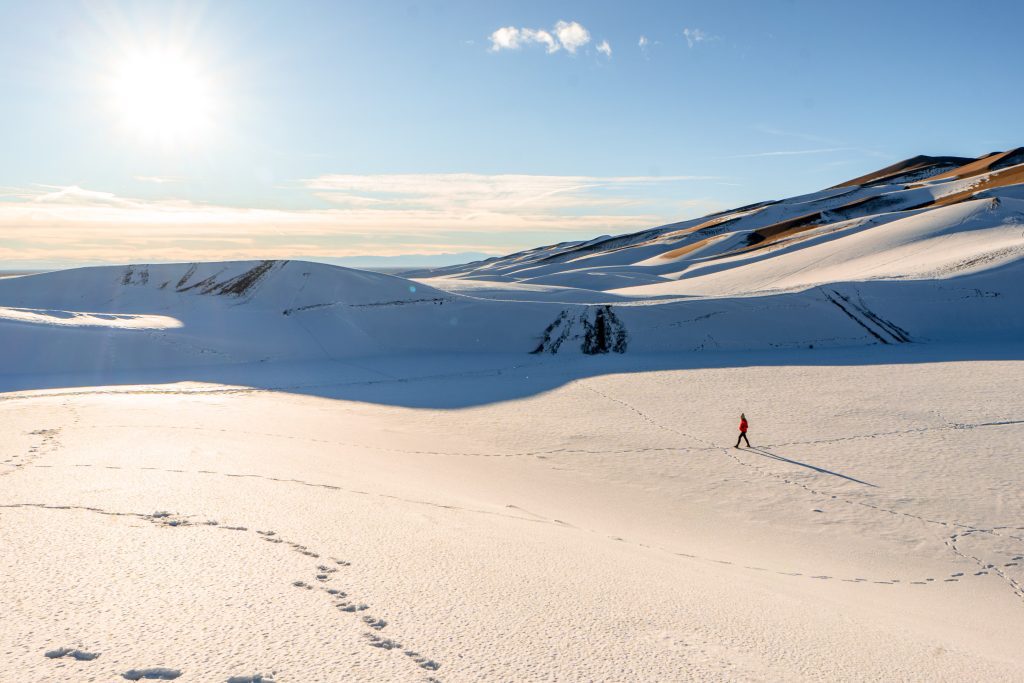
Best Camera Gear for Great Sand Dunes National Park Photography
Here’s all of the camera gear we bring with us on Great Sand Dunes National Park photography trips:
Camera Bag
I am obsessed with my camera bag. I love that it looks stylish but is still very functional. It’s waterproof, too, which is important when hiking with camera equipment. It fits my 4 lenses, camera, and filters, and even has a laptop sleeve. It’s my go-to for traveling or hiking with my camera gear.
Camera Backpack Strap Clip
I use this camera clip on my 2-liter reservoir hiking backpack for longer treks out onto the dunes. It’s much more comfortable than hiking with it around my neck (though I do keep it on a camera strap as well).
Camera Tripod
This is the tripod we currently use. It’s met all our needs, is fairly lightweight, fits in Tim’s hiking backpack, and is very affordable for the quality.
Camera lenses
I shoot on my Sony a7iii with 4 different types of lenses:
- Wide angle lens: Sony – E 10-18mm F4 OSS Wide-Angle Zoom Lens
- Zoom lens: Sony Alpha 70-350mm F4.5-6.3 G OSS Super-Telephoto APS-C Lens
- Prime 24mm lens: Sony Carl ZEISS Sonnar T E 24mm F1.8 ZA E-Mount Prime Lens
- Prime 24-70mm lens: SONY FE 24-70mm f/2.8 GM Lens Prime Lens
A wide-angle lens is a great choice for capturing the expanse of the dunes and the surrounding landscape. A zoom or telephoto lens can also be useful for capturing details and patterns in the sand. We personally loved using our telephoto lens to capture Great Sand Dunes National Park photos.
For wildlife photography, we recommend a better zoom lens than the one we currently have. Generally, 400mm or greater is ideal for close-up wildlife shots. We would pick this 200-600mm lens (it’s currently on my wish list!).
Neutral-Density Polarizers and UV filters
We use both a UV filter and a neutral-density polarizer filter depending on the shooting conditions. A neutral density filter can also be useful for slowing down your shutter speed to capture movement in the sand. Make sure you also have the appropriate adapter rings to fit the filters to your various lens sizes.
Remote shutter
A remote shutter is really helpful for reducing the camera shake that comes from manually pressing the shutter. Most of the time you won’t need this, but if you are taking an extended exposure (such as a night sky or waterfall photograph at Zapata Falls for example), having a perfectly still camera can make or break your photo. You can also use a remote shutter to take pictures of yourself if your camera doesn’t have a built-in intervalometer.
Lens cloth
When shooting outside in the elements, your photography gear, including your lenses and camera’s sensor, gets exposed to wind and dust, especially on sand dunes. A lens cloth can keep your glass clean between shots.
Memory cards
Don’t forget to pack an SD card (and an extra one too)!
Headlamp
Many of the best Great Sand Dunes National Park photography locations are located on hiking trails. If you want to shoot at sunrise or sunset, bring a headlamp with you so you can see while hiking in the dark.
Want to take your photo editing to the next level? We created our own Lightroom presets to edit our photos and now we’ve made them available for purchase! >> Check out our shop on our world travel blog Organized Adventurer to buy our Adventurer Presets today.
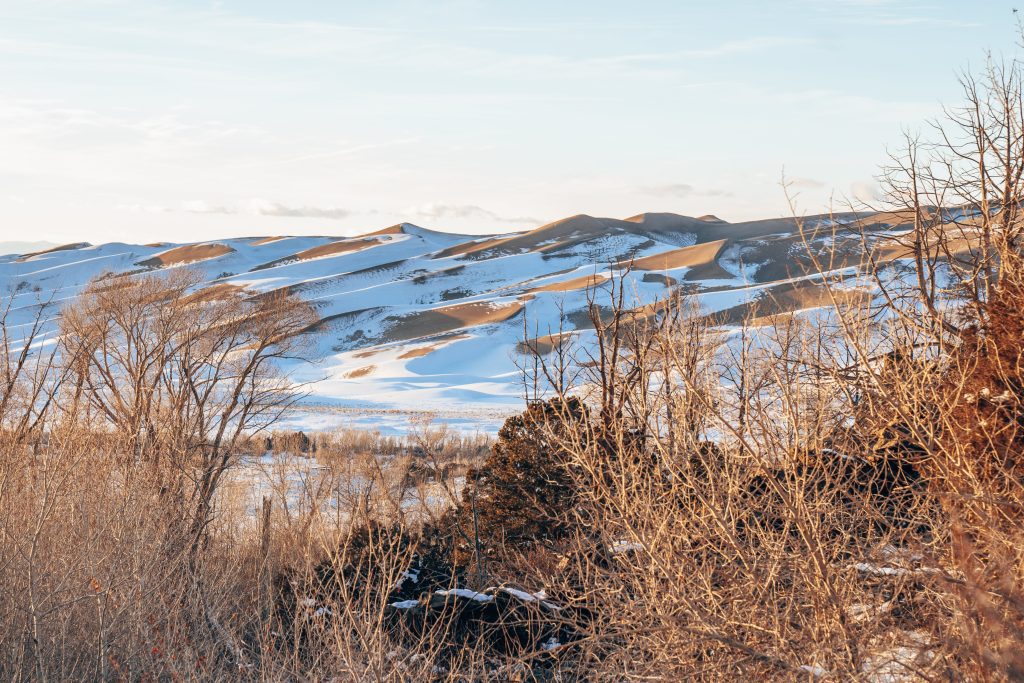
Composition Tips and Ideas for Photographing the Great Sand Dunes
- Low angle: Get down low to the ground to capture a unique perspective of the dunes. This can create a sense of depth and emphasize the lines and textures of the sand.
- High angle: Climb to the top of a dune or find a nearby hill or overlook to capture the sweeping expanse of the dunes and surrounding landscape.
- Silhouettes: Photograph the dunes at sunrise or sunset to capture the colors of the sky and the silhouettes of the dunes. This can create a dramatic and atmospheric effect.
- Patterns and textures: Look for interesting patterns and textures in the sand to create abstract compositions. Shadows, ridges, and ripples can all be used to add depth and visual interest to your photos.
- Leading lines: Use the lines and shapes of the sand to create leading lines that draw the viewer’s eye into the scene. These can be created by the patterns in the sand, the shapes of the dunes, or other elements in the landscape.
- Reflections: If there is water present, such as a seasonal creek or pond, capture reflections of the dunes in the water for a unique and interesting composition.
- Give black and white a try: Sand dunes look great in black and white thanks to the strong contrast between light and shadow. The undulating curves and shapes of the dunes create intricate patterns and textures that are emphasized by the monochromatic tones of black and white photography.
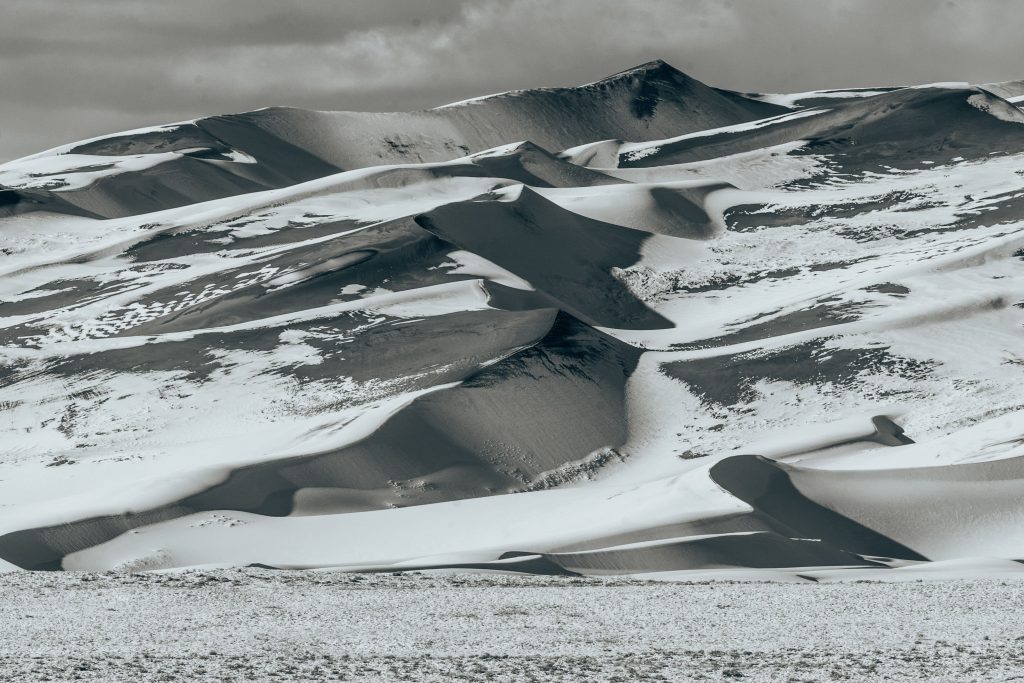
Remember to experiment with different angles, compositions, and lighting conditions to find the best approach for your photos. Look for unique and interesting elements in the landscape to create visually compelling images. And always be respectful of the environment and follow park rules and regulations.
Challenges and Solutions for Photography at Great Sand Dunes National Park
- Bright, high-contrast lighting: Use a polarizing filter to reduce glare and enhance the contrast of the sky and clouds against the sand. You can also try shooting at different times of day, such as during the golden hours around sunrise and sunset when the light is softer.
- Changing light conditions: Be prepared to adjust your settings frequently as the light changes. Use bracketing or shoot in RAW mode to capture a range of exposures and ensure you have enough detail to work with in post-processing.
- Wind and sand: Use a protective cover for your camera and lens to keep them clean and protected from sand and dust. Carry a blower brush and microfiber cloth to clean your gear as needed. Use a sturdy tripod or sandbag to keep your camera stable in windy conditions.
- Heat and exhaustion: Stay hydrated and bring plenty of water and snacks. Wear appropriate clothing and footwear, and take breaks as needed. Plan your hikes for cooler times of day and pace yourself to avoid exhaustion.
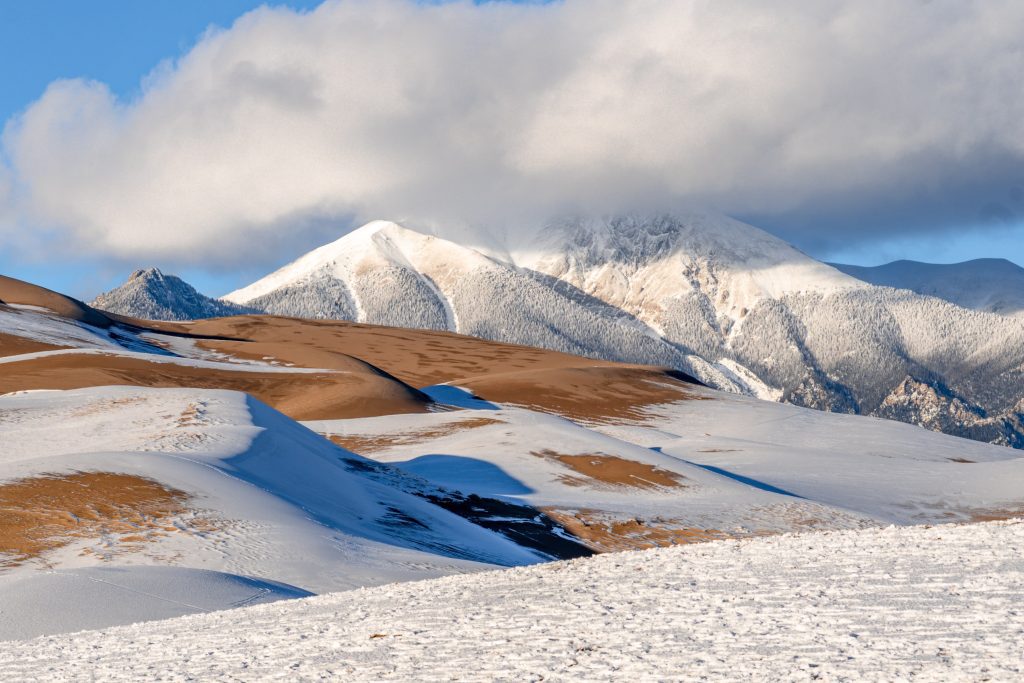
Final Thoughts on Great Sand Dunes National Park Photography
In conclusion, Great Sand Dunes National Park is a photographer’s paradise with its unique landscape and diverse wildlife. Whether you’re an amateur or a professional photographer, there are endless opportunities to capture stunning images of the sand dunes, mountains, and wildlife at this park. With proper planning and preparation, you can create breathtaking photographs that will leave your audience in awe. So grab your camera and head out to Great Sand Dunes National Park for an unforgettable photography experience!
Looking for more info to plan your Great Sand Dunes National Park trip? >> Check out more Great Sand Dunes National Park guides here!






